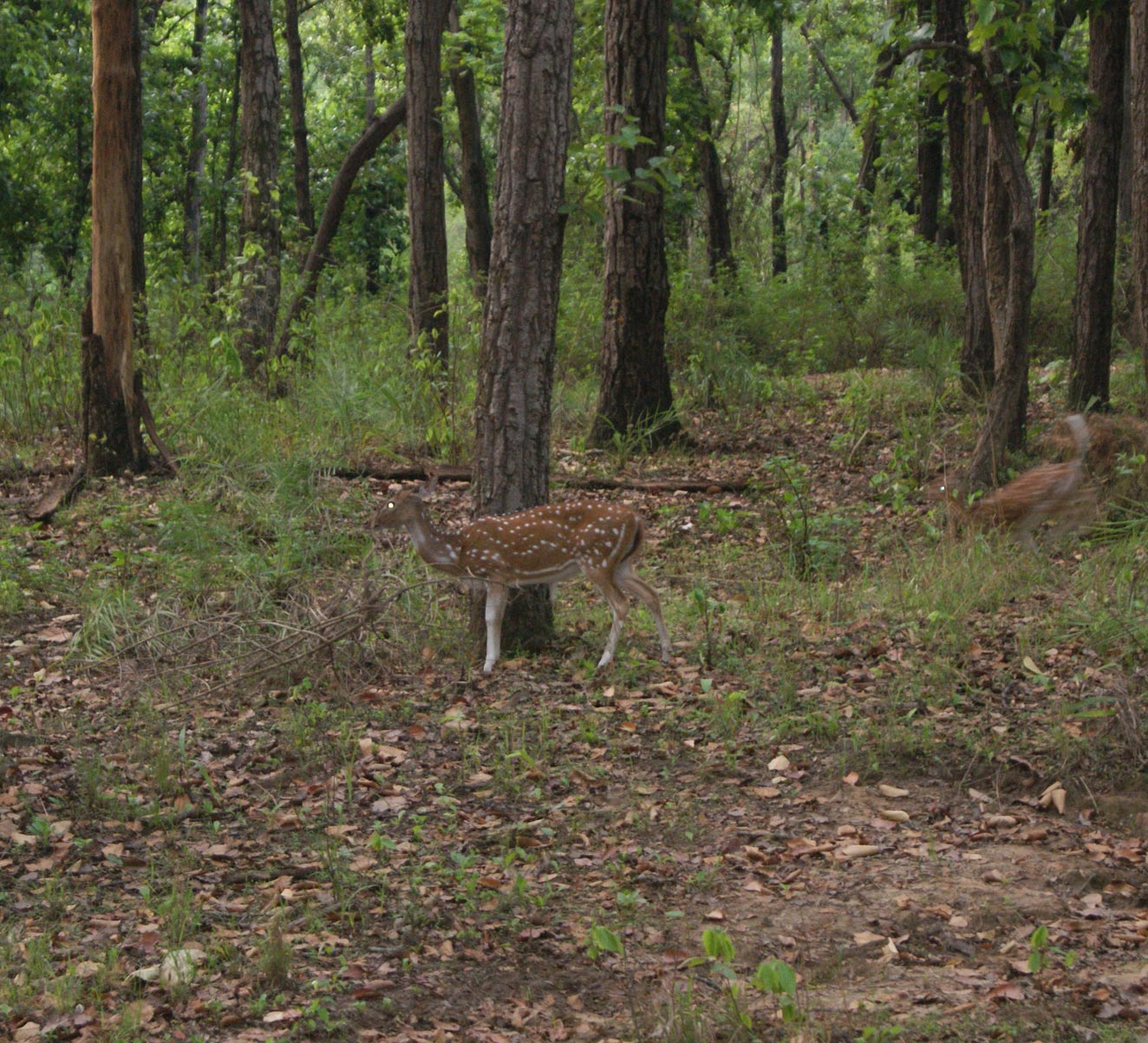The Kanha National Park was originally a part of the Gondwanas or the “land of the Gonds”. The forest of the Kanha Tiger Reserve was inhibited by two indigenous tribes of Central India, the Gonds and the Baigas. The vicinity of the reserve is still occupied with the villagers of these tribes.
Located in Mandla and Balaghat districts, the Kanha Tiger Reserve is being occupied by two major sanctuaries, the Hallon and the Banjar Sanctuaries. Respectively covering the area of 250 sq km and 300 sq km, the Kanha Reserve together forms a greater area of 1,949 sq km.
The chronology of the Kanha National Park makes it more simplified:
1800- Before 19th century, the area was being ruled by the Gond dynasty since many centuries and the Kanha Forest was little known since the slash and burn cultivation methods of both the Baiga and Gond tribes were being dominated at that area. They had good knowledge of the animals and their behaviors.
1862- It marks an important year during 19th century in the history of the Kanha National Park when the first forest management rules were instituted and cutting of various tree species like Sal, Teak, Saja, Shisham and Bija without official authorization were prohibited.
1857-1871 This period has a remarkable importance as the Kanha reserve area is best known to come into existence when Captain J. Forsyth wrote a classic “The Highlands of Central India”. This book (published in 1913) is a highly readable combination of ethnography, forest survey and personal memoir (with dashes of shikar diary thrown in for good measure). Captain J. Forsyth, an officer in the Bengal Staff Corps discovered Panchmarhi hill located in Satpura National Park in Central India.
1879- The Kanha Area was declared as a reserve forest.
1880- The year 1880 which was called the British era, made this region of Madhya Pradesh more valuable when the central provinces was made the center stage of Rudyard Kipling’s imaginations for “The Jungle Book” stories. The tremendous landscapes in the forest of Kanha and Pench are really magnanimous.
1923- The year when a landmark classic book published, entitled “Wild Animals in Central India” that completely focused on the Kanha region’s wildlife. The book was written by A. A. Dunbar Brander, a government official and a keenly observant amateur naturalist.
1933- The year when the Kanha forest area was declared as sanctuary.
1935- The same status was concurred in the eastern sector to Supkhar in year 1935, but within few years the protection for wildlife in this area came to an end due to damages caused by the animals to the field crops, Sal saplings and livestock. Over the next 20 years, shooting of deer and tiger was periodically allowed.
1947-51 The king of Vijaynagaram shot 30 tigers in the Kanha Forest Reserve.
1955-75 This period highlighted and introduced the new national park to the forefront in wildlife research and conservation efforts.
1963-65 When the American scientist George Schaller carried out initiating and detailed research on the Kanha ecosystem.
1967- His research was published as an influential book in 1967 with the title “The Deer and the Tiger”.
1969- In the early 1969, the park management began to relocate villages within the core area like Sonf, Bishanpura and Gorhela and a good management between the reserve and the neighborhood area has been the key factor of its success in the conservation efforts.
1970- In 1970 successful attempts were made to save the hard ground Barasingha, “the jewel of Kanha” from extinction. A special enclosure was made inside the forest to encourage the breeding and to protect them from wild beasts. Further, the rate of the Barasingha species took a hop from 66 to 400-500 range.
1980- The Kanha Park became the perfect location for Stanley Breeden and Belinda Wright’s award winning National Geographic Film, “Land of the Tigers”. The same year followed both Kanha and Ranthambore (in Rajasthan) parks to witness the successful attempt of the first phase of Project Tiger and the annual visitor-ship to both the parks dramatically increased.
1989-91 From 1989 to 1991, an intensive collaboration at Kanha Park between the Centre for Environmental Education in Ahmadabad and the United States National Park Service (under the auspices of the Indo-U.S. Sub-commission on Science and Technology) resulted in the installation of a multi-faceted informational program at Kanha, consisting of a park museum at Kisli, two orientation centers and a variety of publications.
1991- The early 90s was devoted to enhance the features of the Kanha Tiger Reserve including the park’s biodiversity, expansion of tourists’ infrastructure and the reserve’s enviable record for research, monitoring and security. According to many observers, Kanha is undoubtedly the premier national park in India and one of the finest wildlife reserves in the world.
2000- The Kanha National Park was being awarded as the best tourism friendly national parks announced by the Dept of Tourism, Govt of India



 Share
Share Home
Home Packages
Packages Book Now
Book Now